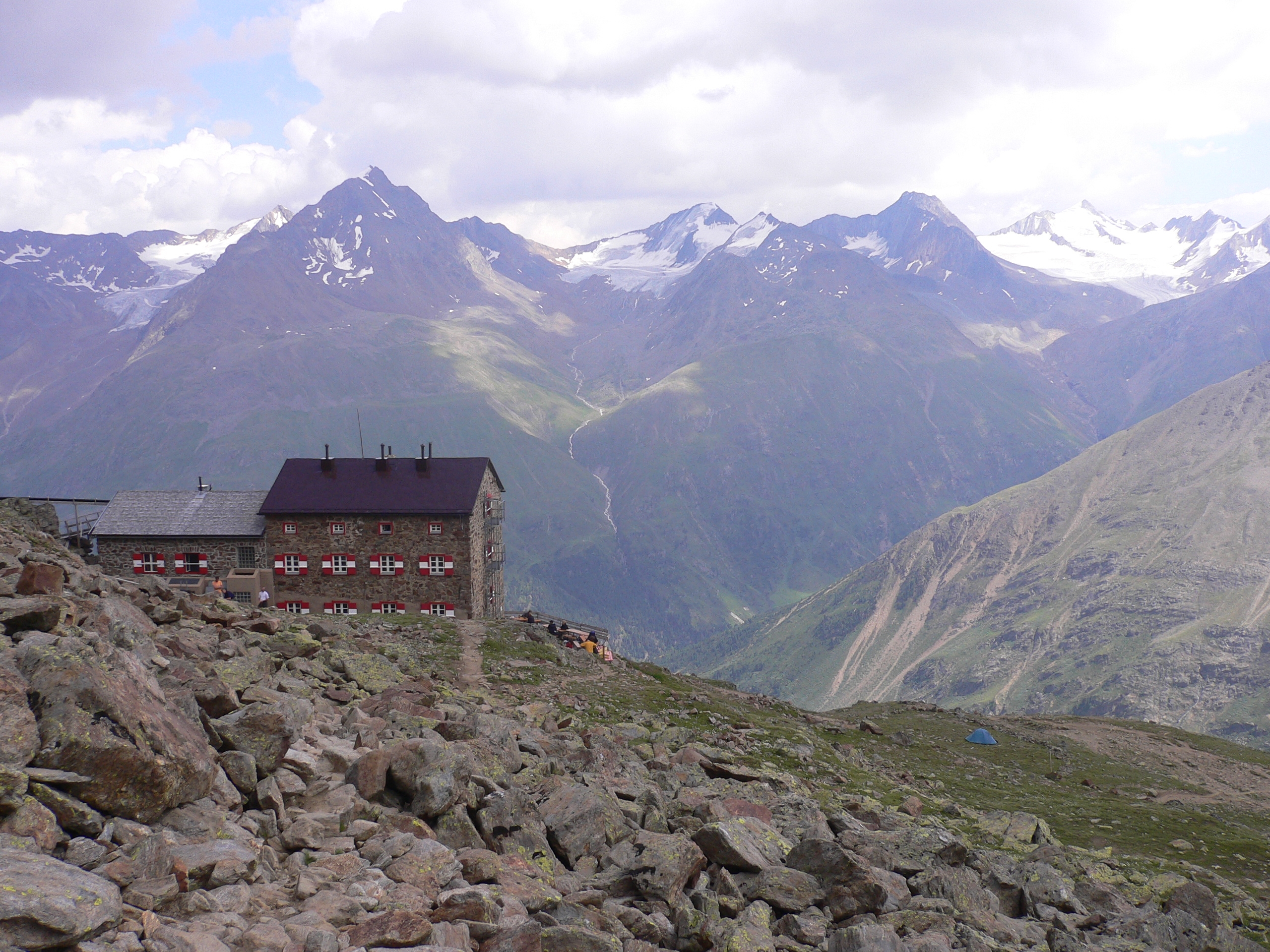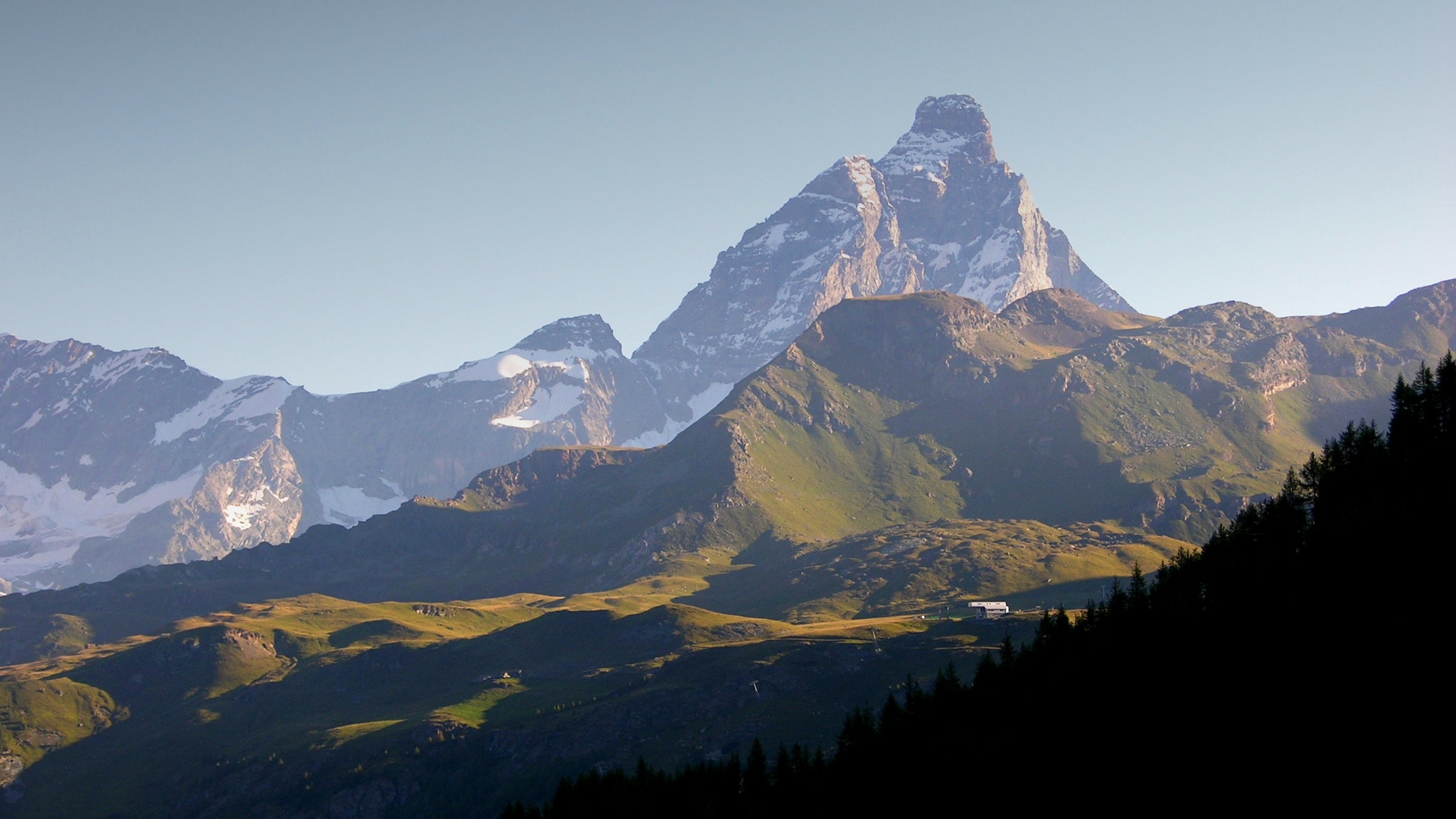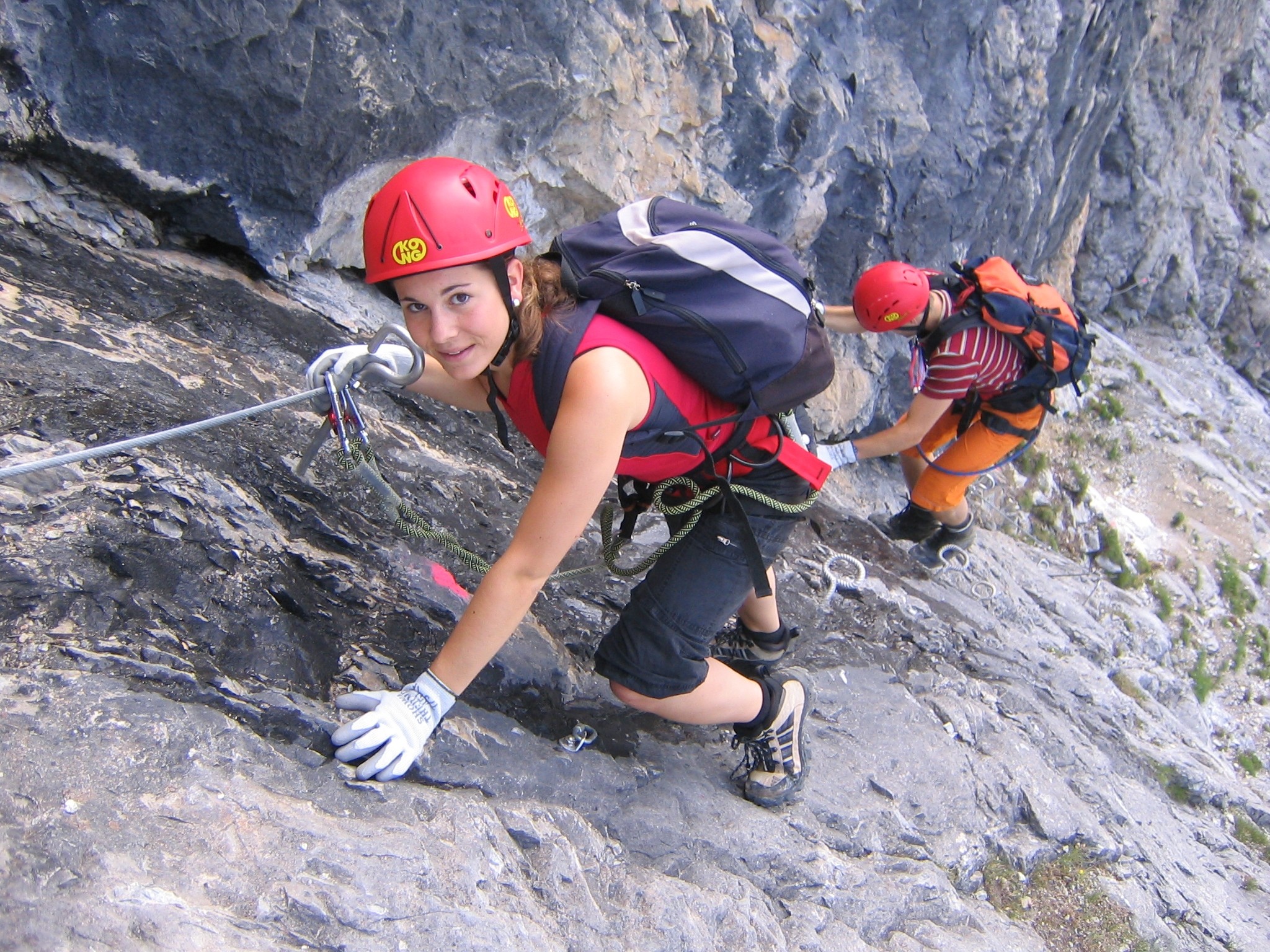|
Refuge Jean-Antoine Carrel
 Refuge Jean-Antoine Carrel is a mountain hut, refuge in the Alps at an altitude of 3,830m in Aosta Valley, Italy. It is located on the south-west ridge of the Matterhorn, near the Swiss border.
The mountain hut was named after Jean-Antoine Carrel who made the Second ascent of the Matterhorn, first ascent of the Matterhorn via the south-west ridge.
It is located along the south-west ridge of the Matterhorn (''Arête du lion''). The new shelter, owned by the ''Società delle Guida del Cervino'' or ''Société des guides du Cervin'', was inaugurated in 1969 and partially redone after the major landslides that affected this side of the mountain in 2002–2003. The Carrel shelter has 50 beds and is always open.
The nearby ''Capanna Luigi Amedeo di Savoia'', built in 1905 by the CAI section of Turi ...
Refuge Jean-Antoine Carrel is a mountain hut, refuge in the Alps at an altitude of 3,830m in Aosta Valley, Italy. It is located on the south-west ridge of the Matterhorn, near the Swiss border.
The mountain hut was named after Jean-Antoine Carrel who made the Second ascent of the Matterhorn, first ascent of the Matterhorn via the south-west ridge.
It is located along the south-west ridge of the Matterhorn (''Arête du lion''). The new shelter, owned by the ''Società delle Guida del Cervino'' or ''Société des guides du Cervin'', was inaugurated in 1969 and partially redone after the major landslides that affected this side of the mountain in 2002–2003. The Carrel shelter has 50 beds and is always open.
The nearby ''Capanna Luigi Amedeo di Savoia'', built in 1905 by the CAI section of Turi ...
[...More Info...] [...Related Items...] OR: [Wikipedia] [Google] [Baidu] |
Rifugio Carrel
A mountain hut is a building located high in the mountains, generally accessible only by foot, intended to provide food and shelter to mountaineers, climbers and hikers. Mountain huts are usually operated by an Alpine Club or some organization dedicated to hiking or mountain recreation. They are known by many names, including alpine hut, mountain shelter, mountain refuge, mountain lodge, and mountain hostel. It may also be called a refuge hut, although these occur in lowland areas (e.g. lowland forests) too. Mountain huts can provide a range of services, starting with shelter and simple sleeping berths. Some, particularly in remote areas, are not staffed, but others have staff which prepare meals and drinks and can provide other services, including providing lectures and selling clothing and small items. Mountain huts usually allow anybody to access their facilities, although some require reservations. While shelters have long existed in mountains, modern hut systems date back ... [...More Info...] [...Related Items...] OR: [Wikipedia] [Google] [Baidu] |
Mountain Hut
A mountain hut is a building located high in the mountains, generally accessible only by foot, intended to provide food and shelter to mountaineers, climbers and hikers. Mountain huts are usually operated by an Alpine Club or some organization dedicated to hiking or mountain recreation. They are known by many names, including alpine hut, mountain shelter, mountain refuge, mountain lodge, and mountain hostel. It may also be called a refuge hut, although these occur in lowland areas (e.g. lowland forests) too. Mountain huts can provide a range of services, starting with shelter and simple sleeping berths. Some, particularly in remote areas, are not staffed, but others have staff which prepare meals and drinks and can provide other services, including providing lectures and selling clothing and small items. Mountain huts usually allow anybody to access their facilities, although some require reservations. While shelters have long existed in mountains, modern hut systems date ba ... [...More Info...] [...Related Items...] OR: [Wikipedia] [Google] [Baidu] |
Alps
The Alps () ; german: Alpen ; it, Alpi ; rm, Alps ; sl, Alpe . are the highest and most extensive mountain range system that lies entirely in Europe, stretching approximately across seven Alpine countries (from west to east): France, Switzerland, Italy, Liechtenstein, Austria, Germany, and Slovenia. The Alpine arch generally extends from Nice on the western Mediterranean to Trieste on the Adriatic and Vienna at the beginning of the Pannonian Basin. The mountains were formed over tens of millions of years as the African and Eurasian tectonic plates collided. Extreme shortening caused by the event resulted in marine sedimentary rocks rising by thrusting and folding into high mountain peaks such as Mont Blanc and the Matterhorn. Mont Blanc spans the French–Italian border, and at is the highest mountain in the Alps. The Alpine region area contains 128 peaks higher than . The altitude and size of the range affect the climate in Europe; in the mountains ... [...More Info...] [...Related Items...] OR: [Wikipedia] [Google] [Baidu] |
Aosta Valley
, Valdostan or Valdotainian it, Valdostano (man) it, Valdostana (woman)french: Valdôtain (man)french: Valdôtaine (woman) , population_note = , population_blank1_title = Official languages , population_blank1 = Italian French , demographics_type1 = Citizenship , demographics1_footnotes = , demographics1_title1 = Italian , demographics1_info1 = 95% , demographics1_title2 = , demographics1_info2 = , demographics1_title3 = , demographics1_info3 = , timezone1 = CET , utc_offset1 = +1 , timezone1_DST = CEST , utc_offset1_DST = +2 , postal_code_type = , postal_code = , area_code_type = ISO 3166 code , area_code = IT-23 , blank_name_sec1 = GDP (nominal) , blank_info_sec1 = €4.9 billion (2018) , blank1_name_sec1 = GDP per capita , blank1_info_sec1 = €38,900 (2018) , blank2_name_sec1 = H ... [...More Info...] [...Related Items...] OR: [Wikipedia] [Google] [Baidu] |
Matterhorn
The (, ; it, Cervino, ; french: Cervin, ; rm, Matterhorn) is a mountain of the Alps, straddling the main watershed and border between Switzerland and Italy. It is a large, near-symmetric pyramidal peak in the extended Monte Rosa area of the Pennine Alps, whose summit is high, making it one of the highest summits in the Alps and Europe.Considering summits with at least 300 metres prominence, it is the 6th highest in the Alps and Europe outside the Caucasus Mountains. The four steep faces, rising above the surrounding glaciers, face the four compass points and are split by the ''Hörnli'', ''Furggen'', ''Leone''/''Lion'', and ''Zmutt'' ridges. The mountain overlooks the Swiss town of Zermatt, in the canton of Valais, to the northeast; and the Italian town of Breuil-Cervinia in the Aosta Valley to the south. Just east of the Matterhorn is Theodul Pass, the main passage between the two valleys on its north and south sides, which has been a trade route since the Roman Era. ... [...More Info...] [...Related Items...] OR: [Wikipedia] [Google] [Baidu] |
Jean-Antoine Carrel
Jean-Antoine Carrel (1829 – August 1891) was an Italian mountain climber and guide. He had made climbs with Edward Whymper and was his rival when he attempted to climb the Matterhorn for the first time. Whymper ultimately succeeded in making the mountain's first ascent in July 1865 while Carrel led the party that achieved the second ascent three days later. Carrel was in the group that became the first Europeans to reach the summit of Chimborazo in 1880. He died from exhaustion when guiding a party on the south side of the Matterhorn. Early life Carrel was born on 16 January 1829 in Valtournenche, in the Aosta Valley, an Arpitan-speaking village of Kingdom of Sardinia (now Italy) which lies at the foot of the Matterhorn. He served in the Bersaglieri, a light infantry unit of the Piedmontese army. He resigned from the Bersaglieri to work as a hunter and mountain guide, but was recalled to duty in 1859 to defend Italy against Austria in the Second Italian War of Independence ... [...More Info...] [...Related Items...] OR: [Wikipedia] [Google] [Baidu] |
Second Ascent Of The Matterhorn
The second ascent of the Matterhorn was accomplished in July 1865, only three days after the successful (with 4 fatalities) expedition led by Edward Whymper on the Zermatt side. The second was effected on the Italian side by Jean-Antoine Carrel and Jean-Baptiste Bich with the abbé Amé Gorret and Jean-Augustin Meynet who followed them near to the summit. The party started from Breuil on 16 July and reached the top the following day. The successful ascent followed a long series of attempts that took place on the southwest ridge of the Matterhorn. The Italian side was considered easier than the Swiss side but despite appearances, the southern routes were harder, and parties repeatedly found themselves having to turn back. Since 2015, the route on the Italian side gained popularity, as the Hörnlihütte on the Swiss side was rebuilt with a limited number of beds and charges a higher lodging fee. This popularity also brought a rising number of climbing accidents on the Italia ... [...More Info...] [...Related Items...] OR: [Wikipedia] [Google] [Baidu] |
Breuil-Cervinia
Breuil-Cervinia (french: Breuil; it, Cervinia; Valdôtain: ) is a ''frazione'' of the ''comune'' of Valtournenche, and is considered one of the most renowned winter and summer tourist resorts in the Alps. Etymology The name of ''Breuil-Cervinia'' is a fusion of two terms: ''Breuil'', in French, the original name of the place before the tourist settlement was built, derived from Valdôtain dialect ''Breuill'' indicating a marshy mountain terrain, a very common toponym throughout the Aosta Valley; and ''Cervinia'', the toponym that was given the town following the process of italianization of placenames in the Aosta Valley wanted by the fascist government, referring to the Cervin (fr.) or Cervino (it.), the Matterhorn. Geography Breuil-Cervinia lies at above sea level, at the foot of the Matterhorn, in the Valtournenche valley and surrounded by the Jumeaux, the Château des Dames, the Furggen and the Grandes Murailles summits. It shares a ski area with Zermatt through the P ... [...More Info...] [...Related Items...] OR: [Wikipedia] [Google] [Baidu] |
Fixed Ropes
In mountaineering, a fixed rope or fixed line is the practice of fixing in place bolted ropes to assist climbers and walkers in exposed mountain locations. They are used widely on American and European climbing routes, where they may be called via ferrata routes, but are not used in "Alpine style" mountaineering. Many guided expeditions to any of the eight-thousanders normally set up fixed rope on steep or icy sections of the route. For example, on the Hillary Step of Mount Everest, fixed rope was used to reduce the bottleneck of climbers that typically results from climbing this technical section just below the summit. In changing mountain environments such as glaciers, ice falls and areas with significant snow, fixed lines must generally be established anew at the start of each climbing season. References [...More Info...] [...Related Items...] OR: [Wikipedia] [Google] [Baidu] |
Mountain Huts In The Alps
A mountain is an elevated portion of the Earth's crust, generally with steep sides that show significant exposed bedrock. Although definitions vary, a mountain may differ from a plateau in having a limited Summit (topography), summit area, and is usually higher than a hill, typically rising at least 300 metres (1,000 feet) above the surrounding land. A few mountains are Monadnock, isolated summits, but most occur in mountain ranges. Mountain formation, Mountains are formed through Tectonic plate, tectonic forces, erosion, or volcanism, which act on time scales of up to tens of millions of years. Once mountain building ceases, mountains are slowly leveled through the action of weathering, through Slump (geology), slumping and other forms of mass wasting, as well as through erosion by rivers and glaciers. High elevations on mountains produce Alpine climate, colder climates than at sea level at similar latitude. These colder climates strongly affect the Montane ecosystems, ecosys ... [...More Info...] [...Related Items...] OR: [Wikipedia] [Google] [Baidu] |







